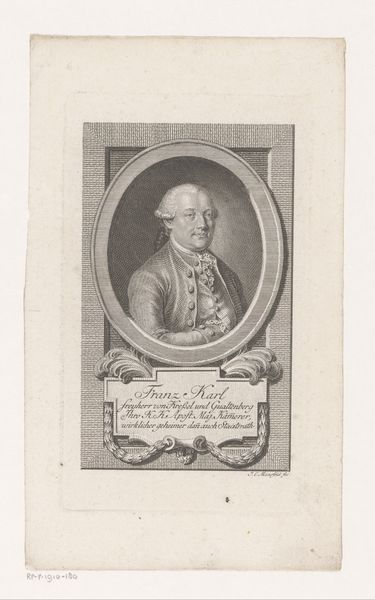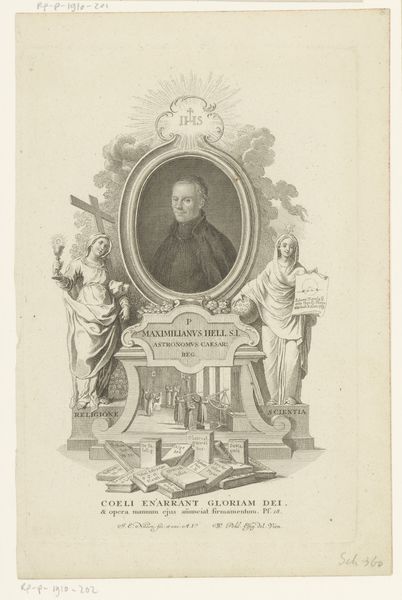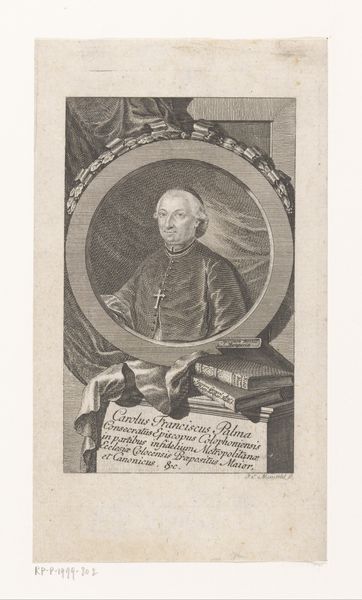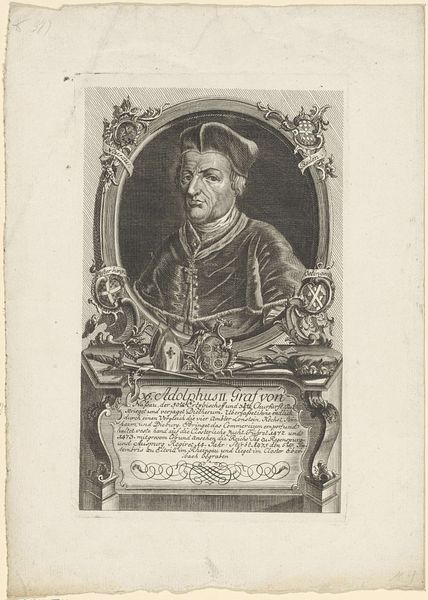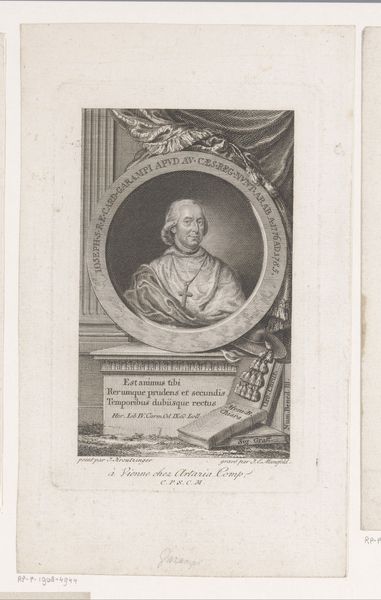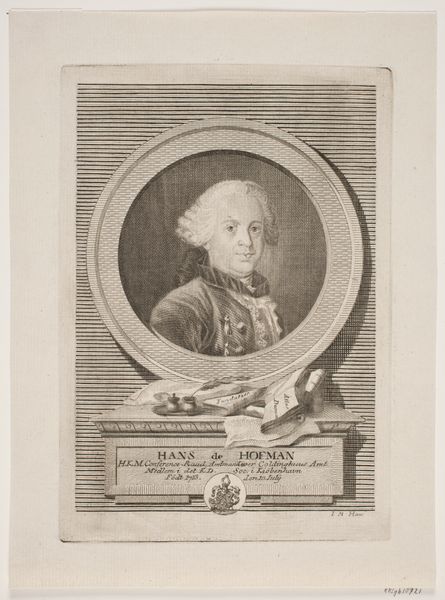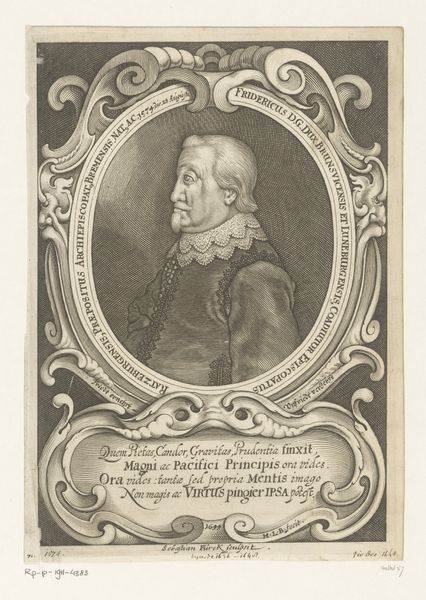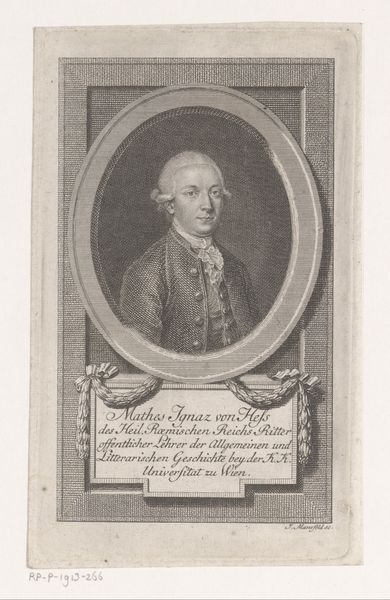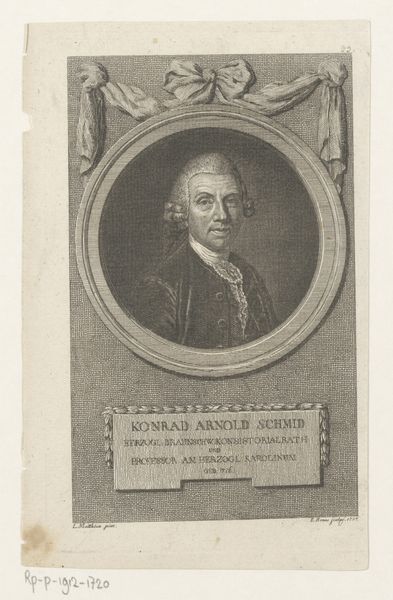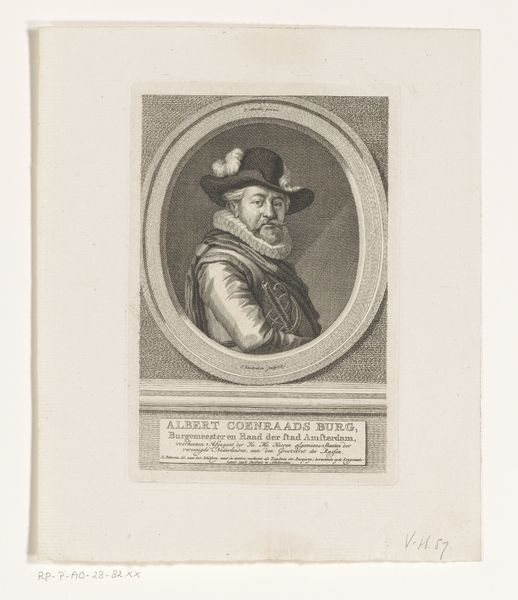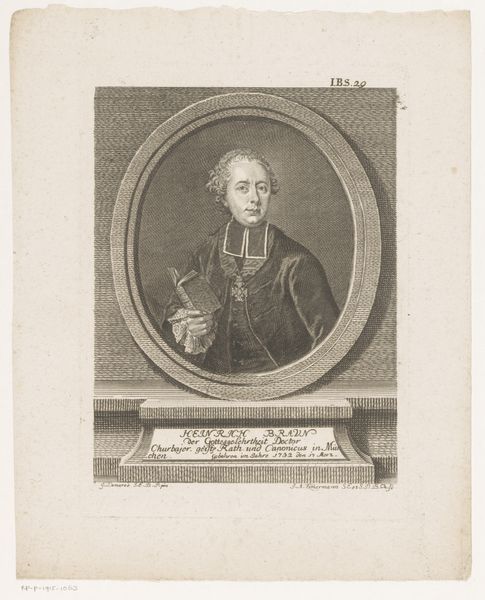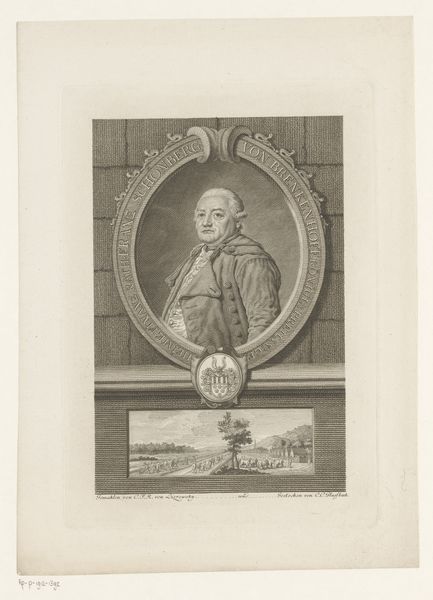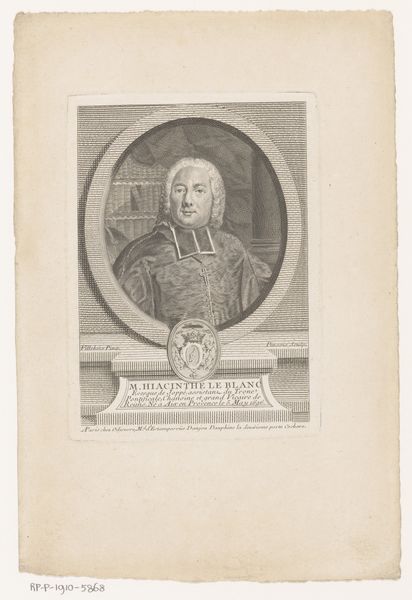
Dimensions: height 177 mm, width 109 mm
Copyright: Rijks Museum: Open Domain
Editor: This is "Portret van Peter Friedrich Reershemius," a baroque-style print made sometime between 1743 and 1799 by C.B. Meyer. The books at the bottom and architectural details in the background are intriguing. How do you interpret this work? Curator: I see a meticulously constructed representation of status and intellect. Notice how the subject, Reershemius, is framed within an oval, a shape often associated with the eternal and divine. What does the drapery behind him suggest to you? Editor: Perhaps it hints at a stage or performance, highlighting the subject's importance? Curator: Exactly! It adds to the theatricality of the portrait. But consider also the books and the quill; they symbolize Reershemius's learning and position as an author or scholar, embedding him within a cultural narrative of enlightenment and knowledge. Do you think there is a reason why this imagery was popular at the time? Editor: I suppose it reinforced the authority and importance of intellectual figures. So, the visual language serves to immortalize Reershemius in a very specific way. Curator: Precisely. It speaks volumes about the values prized during the period. It invites us to contemplate how society's heroes were carefully constructed through symbolic representation. Editor: I never thought about portraits carrying so much deliberate meaning! It's much more than just a likeness. Curator: Indeed. Recognizing these symbols enriches our understanding, connecting us to the cultural memory embedded within the image.
Comments
No comments
Be the first to comment and join the conversation on the ultimate creative platform.
